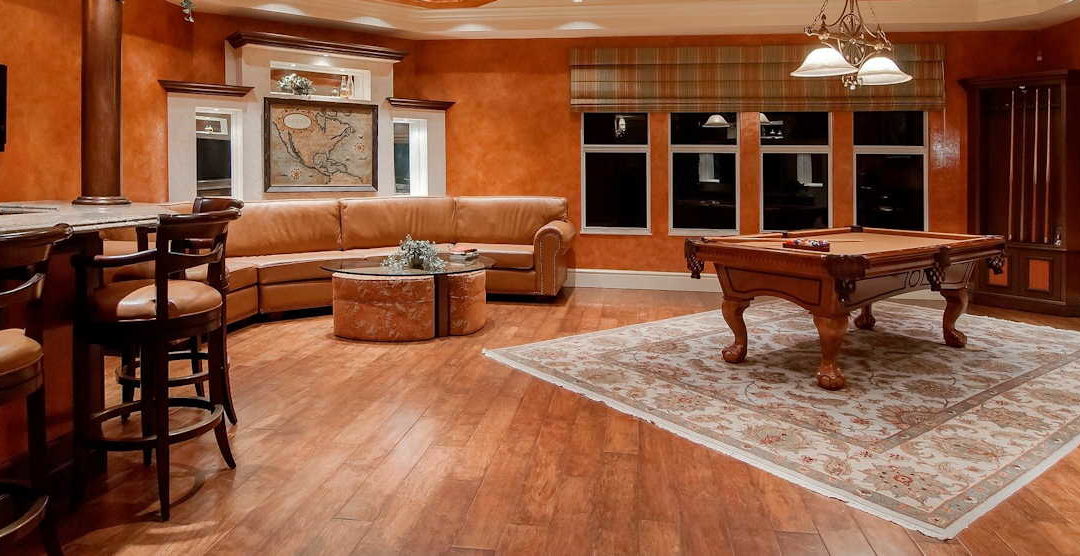People are spending a lot more time at home than years past, in many cases even working each day from their living room. While a “work from home” space used to be the domain of the freelancer, this year we’ve seen the expansion of remote work in all career fields.
And if you’ve been spending a lot more time in your home these days, certain things you’d meant to change or upgrade in the past may be starting to grate on you. That’s been a common feeling shared online and in conversations we’ve had on consults.
If you’ve been considering a living room remodel, here are some ideas to consider.
1. Customizing Your A/V Setup
Whether you’d like a surround sound setup without so many messy wires or the ability to listen to music in multiple rooms of your home, these goals can seem a bit daunting.
If it means running wires through walls, installing plug ports for easy access, or evening soundproofing the walls to eliminate reflections or vibrations, those are remodels worth pursuing if you use the space frequently.
2. Smart Home Functionality
Relatedly, adding smart home functionality is an increasingly popular trend.
- Voice controlled lighting
- App controlled security systems
- App controlled audio systems
- App controlled thermostats
…and more. Those are the big ones people tend to ask about.
An increasing amount of smart devices for the home are compatible with Alexa and Google Home, so if you already have those devices it’s easier than it was years ago to enjoy functional smart features right away.
For instance, there are a variety of multicolor bulbs with brightness controls sold on Amazon that are compatible with Alexa. (Not an affiliate link.)
As with all of our remodeling services, we begin with a consultation to review your goals and make recommendations about priorities and models to seek out. Some of these types of remodels don’t necessarily require getting permits from your city, but it’s always good to check before jumping too far into the process.
That’s another thing we’ll go over with you during a consult. Once we understand what you’re trying to do we can make determinations about permits etc.
3. Expanding The Living Room
This is a big one. It tends to be a more grandiose type of remodel than A/V changes, and the complexity can vary considerably based on how your house is built.
We recommend getting your hands on architectural drawings or blueprints for your home prior to making plans. Particularly if those plans involve bumping out an exterior wall or adding windows.
Adding windows to a long, plain wall can introduce a whole lot of new natural light to the space and make it feel more open even if the literal dimensions of the room are the same. You can opt for a fairly straightforward window with standard dimensions, or add a series of them in creative designs to really make the room pop.
Another common way homeowners expand their living rooms is by opening up doorways, incorporating a “half wall”, or removing non load-bearing walls connecting two rooms.
One for instance here would be if the opening between your living room and kitchen or dining room is fairly narrow, and you’d like to widen it to almost the full width of the wall dividing the rooms. This can make a huge difference in how open (or unconstrained) the living room feels.
4. Upgrading Your Living Room’s Flooring
From carpets to hardwood, all floors wear out eventually. Some people even prefer to switch styles, such as pulling up their carpets to expose the hardwood underneath.
Usually when doing something like that you’ll need to refinish the hardwood as well.
Another thing to consider if you’re delving into your living room flooring anyway is insulation. If the insulation currently under your floor is old, or if the original builder didn’t use enough of it, it can make a big difference to replace it. That difference will not only be in an energy efficiency sense heating and cooling your home, but also in sound isolation.
That last bit is useful for those with home theater systems where it may be undesirable for sound leakage between levels of the home or to other rooms. Damping the floor can help prevent sound vibrations from creating nulls in the sound, and from traveling as readily to nearby rooms.


